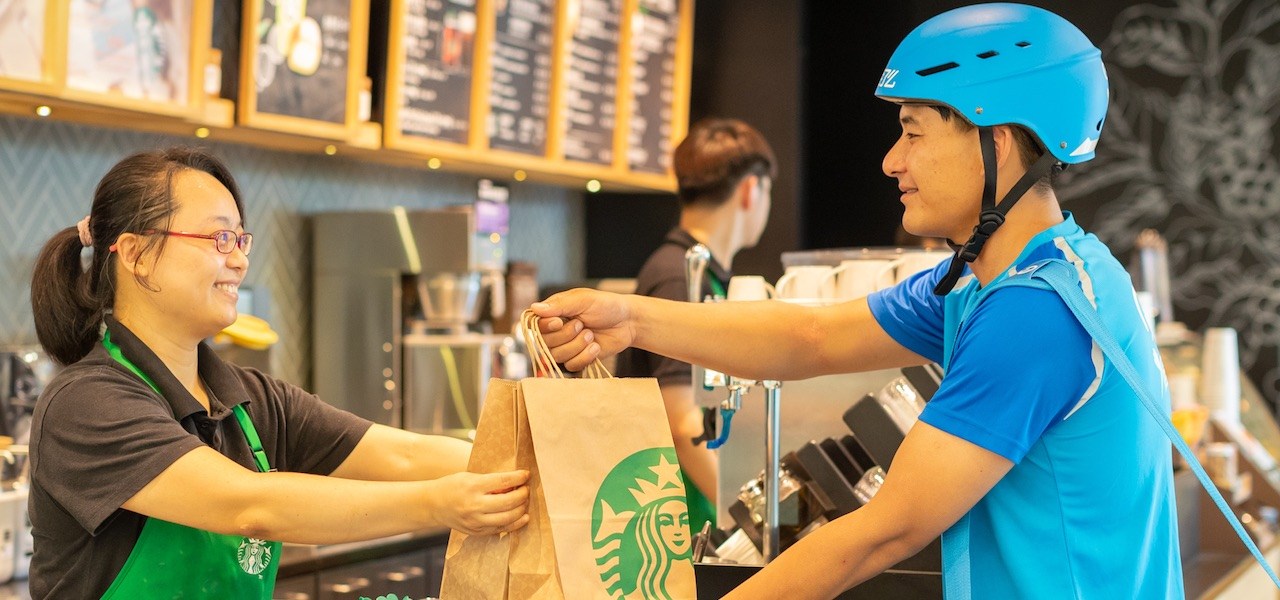Chipotle’s Brian Niccol brings fast-casual experience to Starbucks, but faces a challenge ‘to connect with a new customer’

This week Starbucks announced that CEO Laxman Narasimhan, who took over the role in March 2023, is stepping down effective immediately.
The company announced current Chipotle CEO Brian Niccol is taking over the role on Sept. 9. In the announcement, Starbucks board chair Mellody Hobson said, “Brian is a culture carrier who brings a wealth of experience and a proven track record of driving innovation and growth. Like all of us at Starbucks, he understands that a remarkable customer experience is rooted in an exceptional partner experience.”
The change at the helm comes at a time when Starbucks’ business is in question, with sales slowing down or declining over the last few quarters. While Niccol’s stint is generating excitement among investors and analysts, he has a long list of operational issues to fix to get the coffee giant back on track. Not only does the company have to figure out ways to bring customers back in, it also faces pressure to improve operations and the mobile experience that Starbucks helped pioneer years ago.
A perfect storm of headwinds
Starbucks isn’t the only QSR that’s struggling to bring in customers this year, and has tried to lure in customers with various digital offerings and promotions. In May, for example, it ran “Summer App-y Days,” a play on a happy hour promotion, where app users got 50% off of a beverage every Friday
A few culprits led to Starbucks’ decline over the last few years, including supply chain woes, baristas’ union drives causing tension with corporate, and an overall decline in demand for cafe-bought coffee due to rising cost of living.
The coffee chain’s latest quarterly earnings released earlier this month, with revenue dropping 1% to $9.11 billion, compared to analyst expectations of $9.24 billion. Furthermore, traffic at U.S. stores dropped 6% year-over-year and same-store sales were down by 2%.
On the most recent earnings call with analysts, CEO Laxman Narasimhan acknowledged a “challenging consumer environment.” He added that the company had a “a relentless focus on improving operational execution,” specifically when it came to inventory management, wait times and employee scheduling and turnover. Still, Starbucks also missed its earnings goals last quarter, with former CEO Howard Shultz writing a LinkedIn post saying the company needs to focus on the store experience and update mobile ordering.
Brad Jashinsky, director analyst at Gartner, said consumers cutting back on nice-to-haves like lattes is Starbucks’ biggest challenge. “That’s been happening across the board for fast casual,” he said. Other factors include an increase in competition, not only from other coffee chains, but also the burgeoning of neighborhood specialty coffee shops.
All of these problems could not be solved during Narasimhan’s tenure.
But ultimately, “a year-and-a-half is not enough time to put your stamp on a company, and ultimately, I think it’s more so about impatience from the board.” Jashinsky said of Narasimhan’s exit. “You have activist investors that are driving a lot of these decisions, which impacts the stock price”
At the same time, Starbucks was eager to bring in someone with a proven track record at a fast-casual chain, a contrast to Narasimhan’s consulting background. Niccol brings a strong understanding of the customer and digital experience, Jashinsky said, which Starbucks already has a foundation set for.
Jashinsky explained that Niccol’s “operations experience at Chipotle” can help overhaul many of Starbucks’ in-store inefficiencies and overwhelmed ordering system. This has been a particularly big issue for Starbucks right now, he added, especially as wages rise and baristas face pressure to quickly fulfill complicated mobile orders.
An uphill battle
Other analysts aren’t as sure Niccol will be able to right the ship at Starbucks at the same rate he did at previous companies. “Confidence in Brian Niccol is understandable, but Starbucks is no Chipotle,” Wedbush analyst Nick Setyan wrote in a note. In Niccol’s six years as the CEO of Chipotle, he oversaw changes like store redesigns, a bigger investment in marketing, and improved service speed. He also oversaw the fast-casual chain’s digital growth during the pandemic. In 2021, digital sales grew 24.7% year-over-year to $3.4 billion, representing 45.6% of total sales.
Some view Laxman’s departure as a sign that publicly-traded companies are impatient when it comes to giving new leaders a chance to improve revenue and profits.
Setyan noted that when Niccol was hired by Chipotle from Taco Bell in 2018, the move “made quite a bit of sense at the time given his familiarity with the category.” Now Niccol is going into the world of coffee, overseeing a breakfast-heavy food menu. While Chipotle is mostly U.S.-based, Starbucks is also a much bigger company and operates in 86 countries. “His challenge [at Starbucks] is to connect with a new customer,” Setyan said. “Aside from the power to change the direction of macro headwinds, we view the shareholder euphoria as premature.”
With Niccol’s arrival, it’s an uphill battle to get Starbucks to generate sales and improve margins. “Being able to deliver sophisticated drinks at an affordable price is an ongoing battle,” Jashinsky said.

